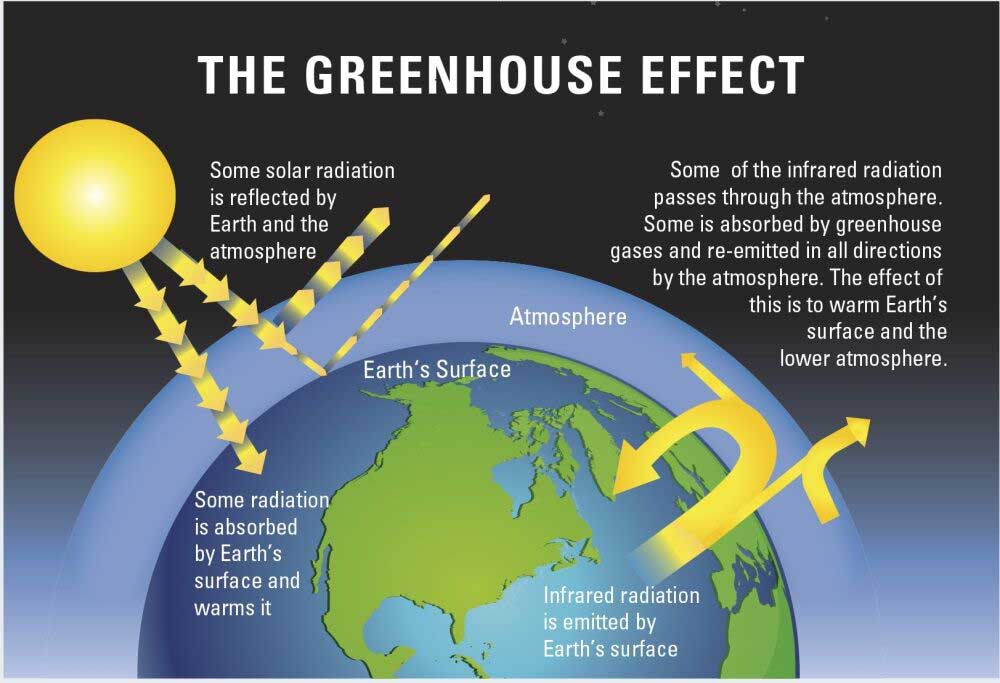National Climate Assessment preview sparks heating debate
Published 2:15 pm Thursday, November 16, 2023

- Greenhouse gases in the atmosphere, including water vapor, carbon dioxide, methane, and nitrous oxide, absorb heat energy and emit it in all directions (including downwards), keeping Earth’s surface and lower atmosphere warm. Adding more greenhouse gases to the atmosphere enhances the effect, making Earth’s surface and lower atmosphere even warmer.
A National Climate Assessment lead author said the Northwest can expect to warm another 5 to 10 degrees Fahrenheit by the end of the century, a projection a University of Washington meteorologist calls overheated.
UW professor of atmospheric sciences Cliff Mass said the projection was too high, even if global greenhouse gases aren’t sharply slashed in the next decade, as climate activists advocate.
Advocacy riddles the entire assessment, Mass said. “It’s very disappointing. It’s a political document. It’s not a science document,” he said.
Mass stresses in his popular weather blog, cliffmass.blogspot.com, that he doesn’t question the underlying science of climate change, but often takes issue with assertions that it is already having much effect on weather or that it will seriously impact our region in the next several decades.
The U.S. Global Research Program produces the climate assessment every five years. The entire fifth assessment has not been published, but an overview was made available Nov. 14.
Mike Chang, the lead author for the report’s chapter on the Northwest, said that even under the most-optimistic carbon-reduction scenario, average temperatures in the region will rise 5 degrees by 2100.
The report describes current conditions and trends, said Chang, director of equity at the Cascadia Consulting Group, a Seattle firm that describes itself as working to foster sustainability.
“The document is meant to be policy neutral, but relevant to policy making,” he said.
With varying degrees of confidence, the report warns the number of droughts, wildfires, heat waves and billion-dollar disasters will increase.
With “medium confidence,” drought impacts are increasing, the report states. Medium confidence means “few sources” and “competing schools of thought,” according to the report.
Gender, class, ethnicity, age, race and disability will affect a person’s ability and “privilege” to respond to climate change, according to the report.
The report echoes the United Nation’s International Panel on Climate Change, which estimates average global temperatures have risen about 2 degrees Fahrenheit since 1900.
The U.N. panel projects temperatures will rise another 1 to 6 degrees by the end of the century, depending on carbon emissions. The projection includes ocean temperatures, which are warming slower than on land.
Chang said on a government-hosted podcast that land temperatures in Washington, Oregon and Idaho will get higher than average global temperatures.
“We’re going to expect that temperatures increase another 5 to 10 degrees within the Northwest,” said Chang, who has a master’s degree in marine affairs from the University of Washington.
Five internationally recognized scenarios range from carbon emissions doubling by 2050 to being eliminated by 2050. The world is not on a path toward either extreme, according to the U.N. climate panel.
Under a middle-of-the road scenario, in which emissions are roughly flat, Mass said he projects Northwest temperatures will rise 1 to 2 degrees by the end of the century.
Projections that temperatures will rise by at least 5 degrees in the region are “completely unrealistic,” he said.
‘I would say Cliff knows what he’s doing. I have great respect for him, but I think his take is on the low side of the range that the climate community is expecting for the Pacific Northwest.
Nick Bond, Washington state climatologist
Washington State Climatologist Nick Bond said Chang’s worst-case scenario was perhaps too high, but not wildly high. Mass’s projections are perhaps too low, said Bond, also a UW professor.
“I would say Cliff knows what he’s doing. I have great respect for him, but I think his take is on the low side of the range that the climate community is expecting for the Pacific Northwest,” Bond said.
End of the century temperatures are hard to predict, he said. “I think we need to do our best at it.”
The assessment overview does not propose any policies, though getting to net-zero emissions may require unspecified “behavioral changes and shifts in governance structures,” according to the report.
The Northwest chapter states that poor, rural residents and minorities are disproportionately exposed to heat, floods, wildlife and “other climate hazards” because of “ongoing systemic oppression.” The report did not cite examples.








